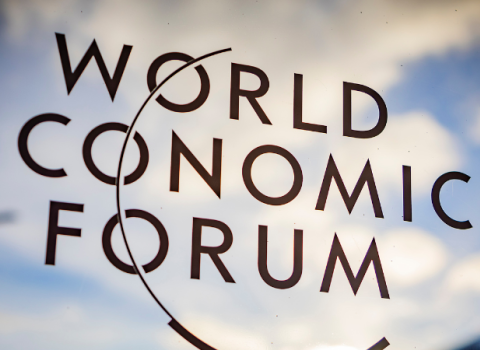
But two former Microsoft Corp. managers are trying to do just that. Edward Jung and Nathan Myhrvold started Intellectual Ventures, which they call an "invention capital" company, in Bellevue, WA, several years ago. It's an IP bazaar where buyers can purchase patent portfolios to turn into products. By aggregating patents, Intellectual Ventures also aims to stimulate invention both in house and in the patents it buys or licenses from corporations, universities and others throughout the world.
Over time, it intends to market its "invention portfolio" on a broad and non-exclusive basis through a variety of channels including spin-out companies.
"There is a balkanization of the innovation supply," Edward Jung, co-founder and chief scientific officer of Intellectual Ventures, told an audience of technology transfer managers and investors recently at an IBF seminar at Boston University. "Now there is cross-institutional, global development."
Jung said that in the Golden Age of invention in the past hundred years, a single genius like Edison could found multiple industries with his ideas. Now one person can't hold everything necessary to do that in his or her head; it takes multiple people, often across multiple institutions or labs and geographies. And it's become more expensive and complicated to fund complex new technologies.
Lessons learned from software
The company's idea of aggregating patents came from the software industry. "An operating system is an aggregation of technology," Jung explained. "Companies don't want to license 10,000 patents individually."
When Intellectual Ventures accumulates patents for portfolios, it also aims to develop long-term relationships with customers, so it can provide the IP needed to update products. Customers can include corporations and even venture capitalists aiming to bring IP into their investments. "We want to be a supplier of IP for the long term, for example, a product line with versions that go into the future," Jung said. "We have a wide list of IP available to customers."
The result of the increasingly complex patent landscape means corporations will have to change the way they view IP and manage it.
"Companies will manage invention in a new way," explained Jung. "There will be faster innovation and better risk management." Jung, a former chief architect at Microsoft, himself holds more than 70 patents and has more than 500 patents pending. His issued patents are in the areas of biomedical research instruments and neural networks, as well as several fundamental patents in object technology, distributed operating systems and semantic data analysis.
IP liquidity
There's still a learning curve about IP in many industries and in academia. As in the early software industry, when software was copied liberally by large and small corporations alike, there is an educational element to convincing buyers and industry participants that IP is valuable and worth protecting, Jung said.
"IP is the most valuable thing for a company, but very few people invest in IP," said Jung. "We aggregate IP. But there is not a liquid way to price things, which is a challenge we'll have to address in the next decade. Patents don't hold value until they are turned into products."
In the cases of university professors, some tend to overvalue their own patents when negotiating to transfer technology. "A small number of universities are experienced in spinning out companies," said Jeff Andrews, a partner with venture capital company Atlas Ventures in Waltham, MA, who also spoke at the Boston University event. "But the value of IP can be a disconnect."
Frederick Farina, assistant vice president at Caltech in Pasadena, CA, agreed. "There's a certain greed factor from universities. The value of IP can be overstated."
When they started the company in 2000, Jung and co-founder Myhrvold, former chief technology officer for Microsoft, expected to source IP from bankrupt companies. But they ended up sourcing more from universities and Fortune 100 companies that are leaving a business and want to get money for their IP. Inventors get up front money and a portion of the profits, which in turn gives them liquidity to fund future inventions.
U.S. Patent Reform
Controversial patent reforms are set to go into effect Nov. 1 amid rising patent application backlogs in the United States.
The US Patent and Trademark Office (USPTO) has a backlog of 730,000 applications, up for the 15th year in a row, and an increase of 73 percent since 2002. To compound this, the office is not hiring enough examiners to reduce the patent backlog, according to a recent Government Accountability Office report. Seventy percent of current examiners said they worked unpaid overtime to meet their patent review goals.
The new U.S. patent reforms aim to make the patent examination process more efficient by encouraging applicants to be more precise in describing the scope of their inventions, according to the USPTO.
“Higher quality applications result in a more effective examination,” Jon Dudas, Under Secretary of Commerce for Intellectual Property and director of the USPTO, said in a statement. “These rules better focus examination and will bring closure to the examination process more quickly, while ensuring quality and maintaining the right balance between flexibility for applicants and the rights of the public.”
Under the new rules, applicants may file two new continuing applications and one request for continued examination as a matter of right. Also, each application may contain up to 25 claims, with no more than five of them independent claims, without any additional effort on the part of the applicant. Beyond these thresholds, however, the new rules require applicants to show why an additional continuation is necessary or to provide supplementary information relevant to the claimed invention to present additional claims.The changes will make it more costly and take more time for universities and companies to get patents, so some fear the rules will stymie early-stage innovation patents. One reason is that early-stage technologies may change substantially once they move to end products, so they new patent rules may not provide the breadth needed by university technology transfer offices. Patent-related costs also could rise under the new rules.
Also complementary to Intellectual Ventures' operations is patent auctioneer Ocean Tomo. "An auction is a great way of setting prices. We’ve participated in Ocean Tomo auctions...as buyers and sellers," Jung said.
Patent changes
Changes to the US patent system (see sidebar) are making ripples across universities and private companies, as well as in legal and other circles. Some, like Ashley Stevens, director of the Office of Technology Transfer at Boston University, said the new patent legislation, which takes effect on November 1, could make it more difficult to fund early stage companies, in which IP is a critical factor to success in drawing funding and protecting intellectual assets going forward.
Jung worries more about what the patent situation means in terms of diminishing US competitiveness. He pointed to the potential for increasing overseas desire to get value from IP. For example, Chinese company Lenova, which bought personal computer operations from IBM, gets $2,000 every time a laptop computer is bought, Jung said. But most of the profits go to the United States, to Microsoft and IBM. "With their IP positions, they get the lion's share of the profit," he said. "China and other countries envy the US IP economy. If we start impairing our IP economy we may open up too much IP to foreign companies."





 A unique international forum for public research organisations and companies to connect their external engagement with strategic interests around their R&D system.
A unique international forum for public research organisations and companies to connect their external engagement with strategic interests around their R&D system.